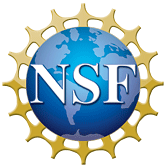More Sensitive Ground Telescopes
Next: Impact of a Smaller Up: Detectable Sources for ARISE Previous: Extended Integration Time
More Sensitive Ground Telescopes
If a lower data rate were used, the number of detectable
sources could be increased substantially by using a large ground
telescope as an anchor. For instance, the Green Bank Telescope
(GBT) is expected to have an SEFD of ![]() Jy,
compared to the value of 4200 Jy assumed for a VLBA telescope.
Use of the GBT thus would reduce the detection threshold by a
factor of
Jy,
compared to the value of 4200 Jy assumed for a VLBA telescope.
Use of the GBT thus would reduce the detection threshold by a
factor of ![]() . In the Southern
Hemisphere and near the equator, the more sensitive phased
Millimeter Array could be used. Table 4 illustrates the potential
number of sources that could be detected, given a telescope with
GBT sensitivity in the Northern and Southern Hemispheres. Since
the telescopes mentioned here will not be dedicated to VLBI, they
probably will not be available for a large fraction of their time
with ARISE. Instead, they would more likely be used for
occasional highly rated observations of weak sources at 86
GHz.
. In the Southern
Hemisphere and near the equator, the more sensitive phased
Millimeter Array could be used. Table 4 illustrates the potential
number of sources that could be detected, given a telescope with
GBT sensitivity in the Northern and Southern Hemispheres. Since
the telescopes mentioned here will not be dedicated to VLBI, they
probably will not be available for a large fraction of their time
with ARISE. Instead, they would more likely be used for
occasional highly rated observations of weak sources at 86
GHz.
| Table 4. Detectable 86-GHz Sources using GBT Baseline | ||
|
Assumed |
||
| Data Rate
(Gbit sec |
Detection Threshold | Number |
| 8 | 26 mJy | > 1000 |
| 4 | 37 mJy | > 1000 |
| 2 | 52 mJy | > 500 |
| 1 | 74 mJy | > 300 |




Connect with NRAO